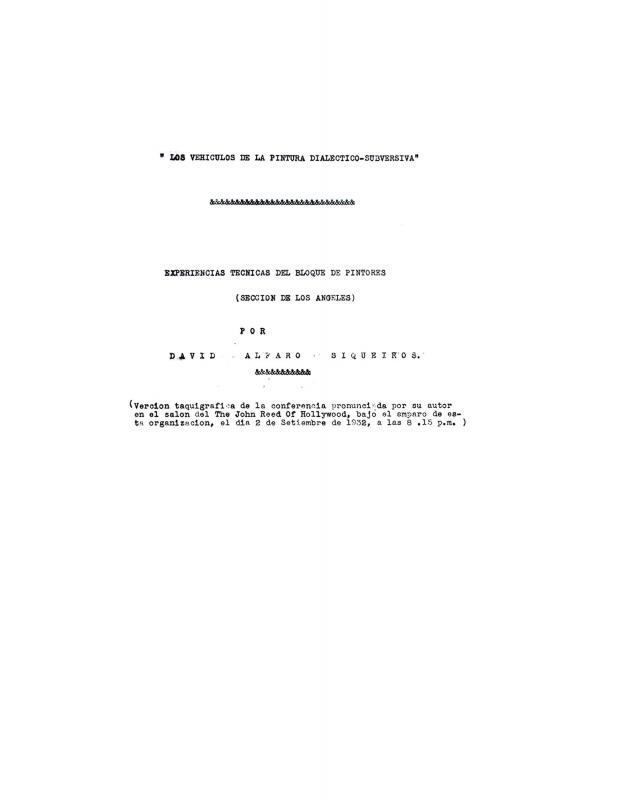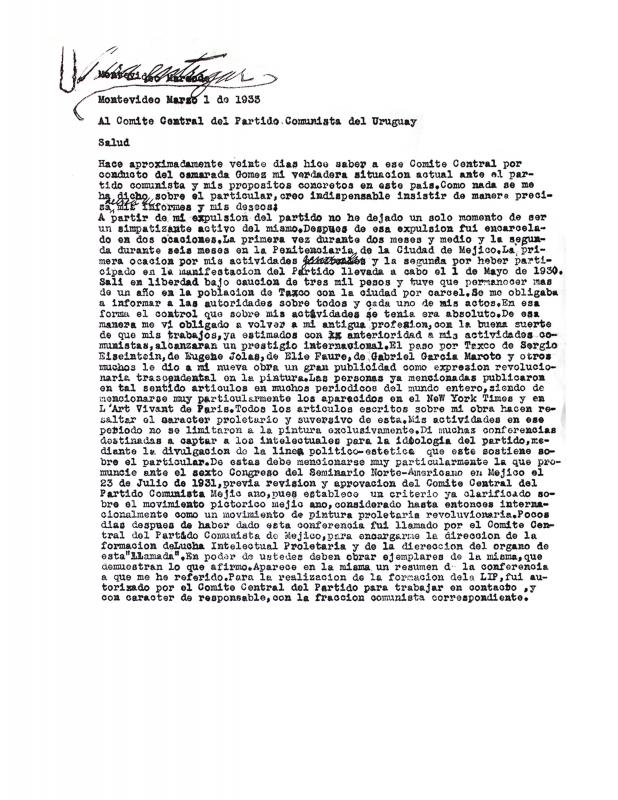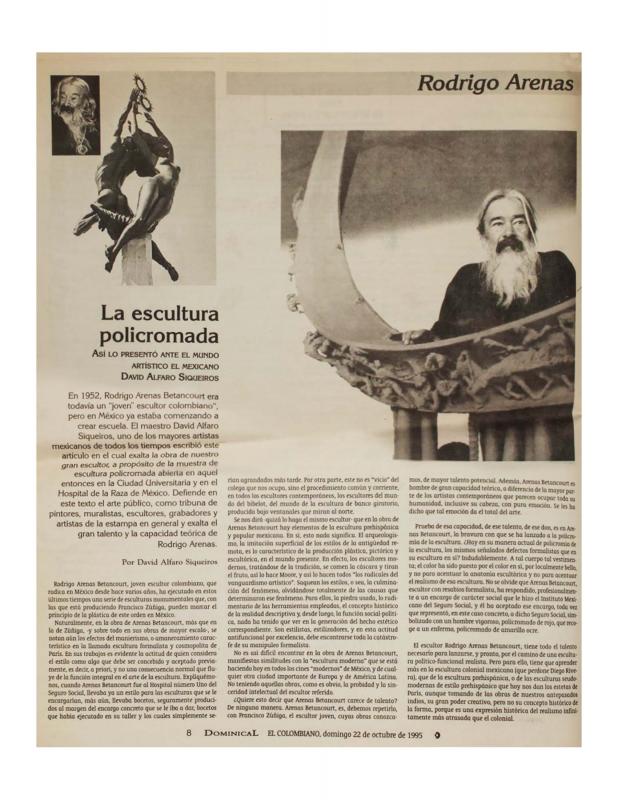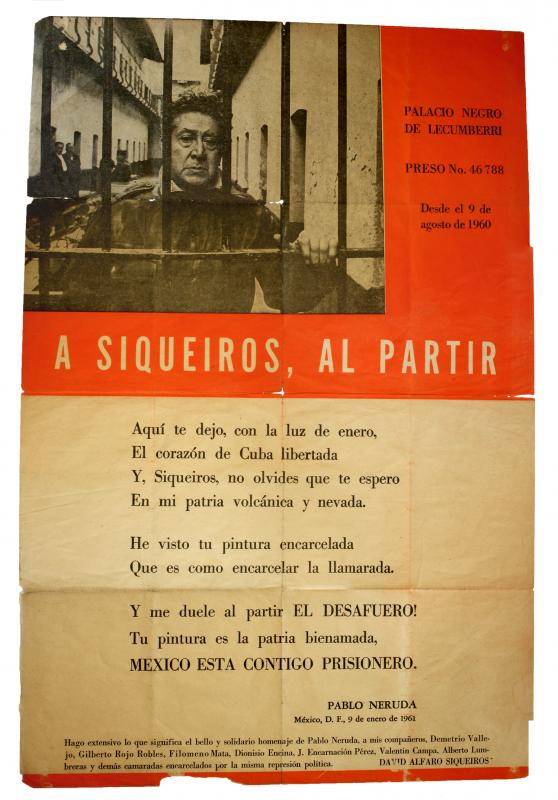As he has done in his lectures, David Alfaro Siqueiros (1896–1974) lauds the legacy of the Mexican muralist movement. He also, however, underscores the intrinsic limitations of the archaic technology used to create frescos in the Renaissance style, a technique which will only work on interior walls. Some Uruguayan critics—such as Luis Eduardo Pombo (1900–76)—suggested other limitations that directly affect Mexican muralism itself, claiming that its excessive focus on aestheticist and folklorist (indigenist) concerns prevented it from fulfilling its political and revolutionary mission satisfactorily. But this particular argument is not included in this article, in which Siqueiros stresses his experience with the Bloque de Los Ángeles (a mural project he worked on with a group of artists in Los Angeles), which he describes as an unprecedented technical advance in the field of mural painting. One aspect of this development was the outdoor mural’s ability to withstand weather conditions; but what was also significant was that the new technology allowed an artist to paint murals in strategic places anywhere in a city. Siqueiros argued that a technological revolution in art was closely related to a proletarian revolution at a social level. He claimed that this new technology—that made it possible for paint to adhere to concrete walls for long periods of time—created mural art that was more compatible with the spirit of the urban working classes living in large industrial areas. Siqueiros thus expresses his opposition to the traditional muralism that tended to rely on archaic techniques and was skewed toward indigenous populations among the rural working class. The new mural art that he proposed was therefore not based on a theory but on a practice. That is, it extrapolated theoretical elements from the practice of groups working with modern technology.
The article ends with an announcement that a committee of local Uruguayan artists was being formed to support the visiting Mexican and to arrange for him to create a mural painting in Montevideo.
[As complementary reading, see the following articles by Siqueiros in the ICAA digital archive: “Los vehículos de la pintura dialéctico-subversiva. Experiencias técnicas del Bloque de Pintores (Sección Los Ángeles)” (doc. no. 1238676); the letter written by Siqueiros to the Central Committee of the Uruguayan Communist Party: “Al Comité Central del Partido Comunista del Uruguay” (doc. no. 1238917); “La escultura policromada: así lo presentó ante el mundo artístico el mexicano David Alfaro Siqueiros” (doc. no. 1100301); and “A Siqueiros, al partir” (doc. no. 864589)].




